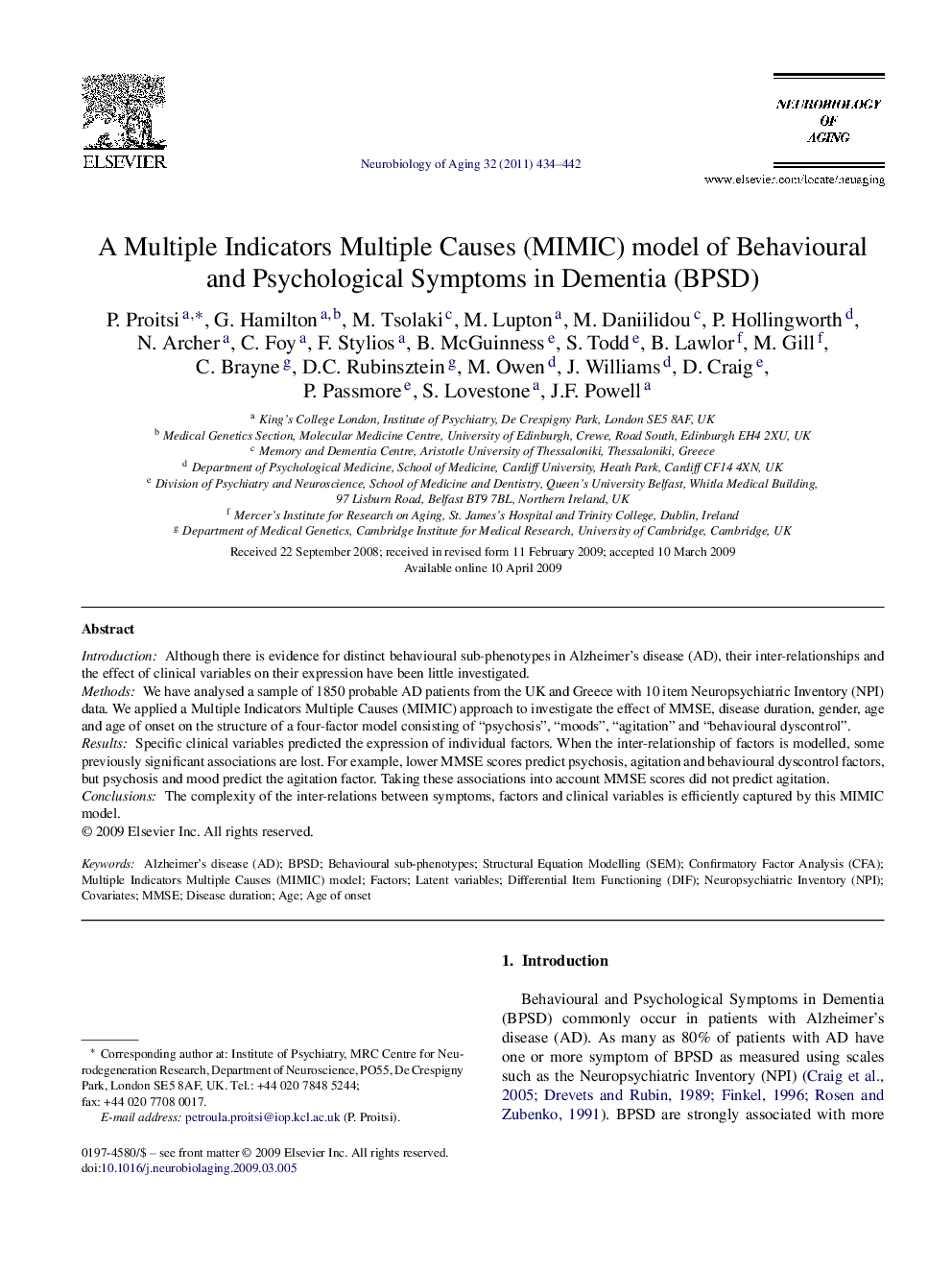| Article ID | Journal | Published Year | Pages | File Type |
|---|---|---|---|---|
| 329245 | Neurobiology of Aging | 2011 | 9 Pages |
IntroductionAlthough there is evidence for distinct behavioural sub-phenotypes in Alzheimer's disease (AD), their inter-relationships and the effect of clinical variables on their expression have been little investigated.MethodsWe have analysed a sample of 1850 probable AD patients from the UK and Greece with 10 item Neuropsychiatric Inventory (NPI) data. We applied a Multiple Indicators Multiple Causes (MIMIC) approach to investigate the effect of MMSE, disease duration, gender, age and age of onset on the structure of a four-factor model consisting of “psychosis”, “moods”, “agitation” and “behavioural dyscontrol”.ResultsSpecific clinical variables predicted the expression of individual factors. When the inter-relationship of factors is modelled, some previously significant associations are lost. For example, lower MMSE scores predict psychosis, agitation and behavioural dyscontrol factors, but psychosis and mood predict the agitation factor. Taking these associations into account MMSE scores did not predict agitation.ConclusionsThe complexity of the inter-relations between symptoms, factors and clinical variables is efficiently captured by this MIMIC model.
